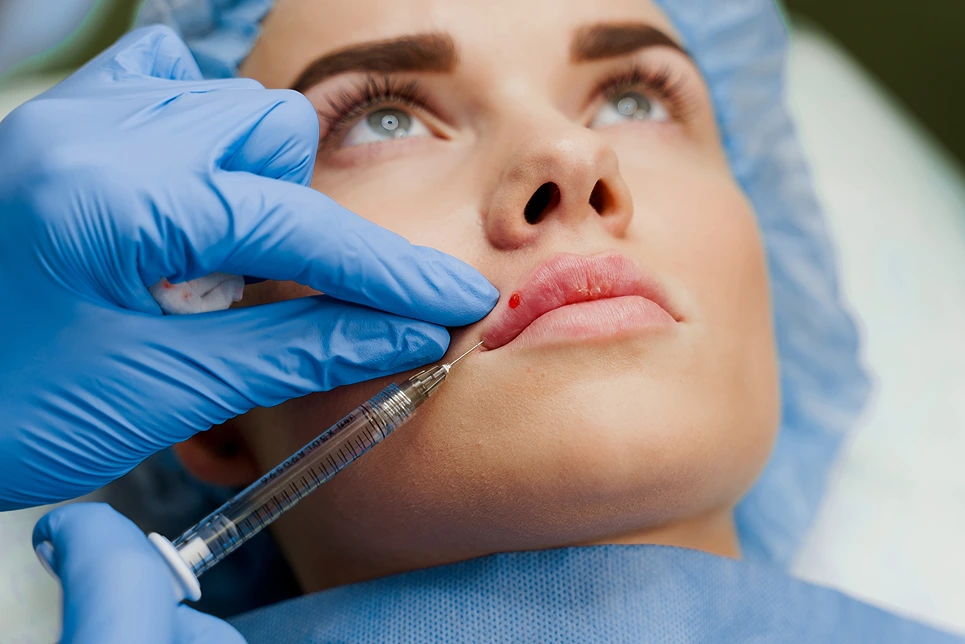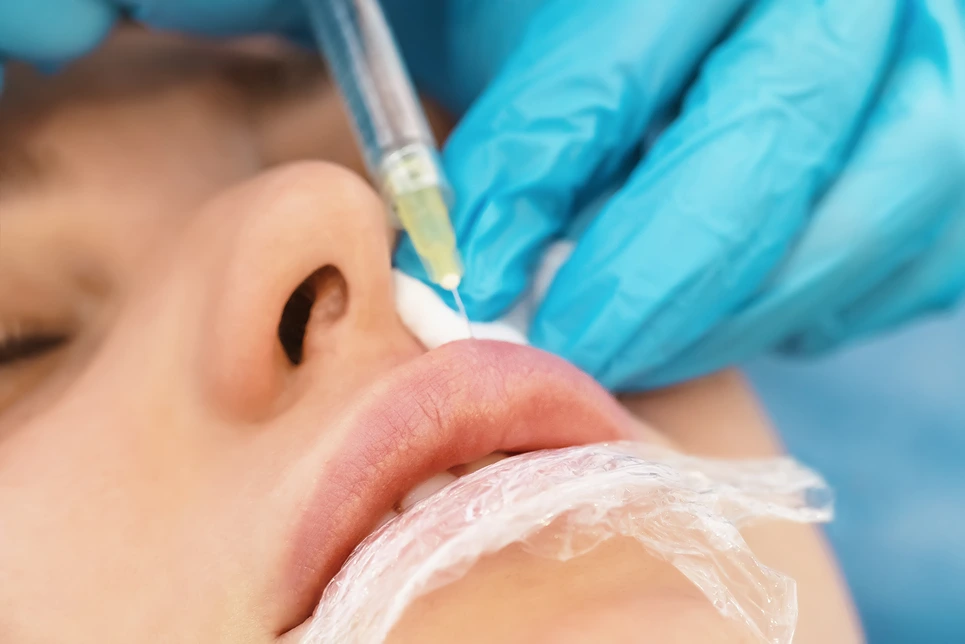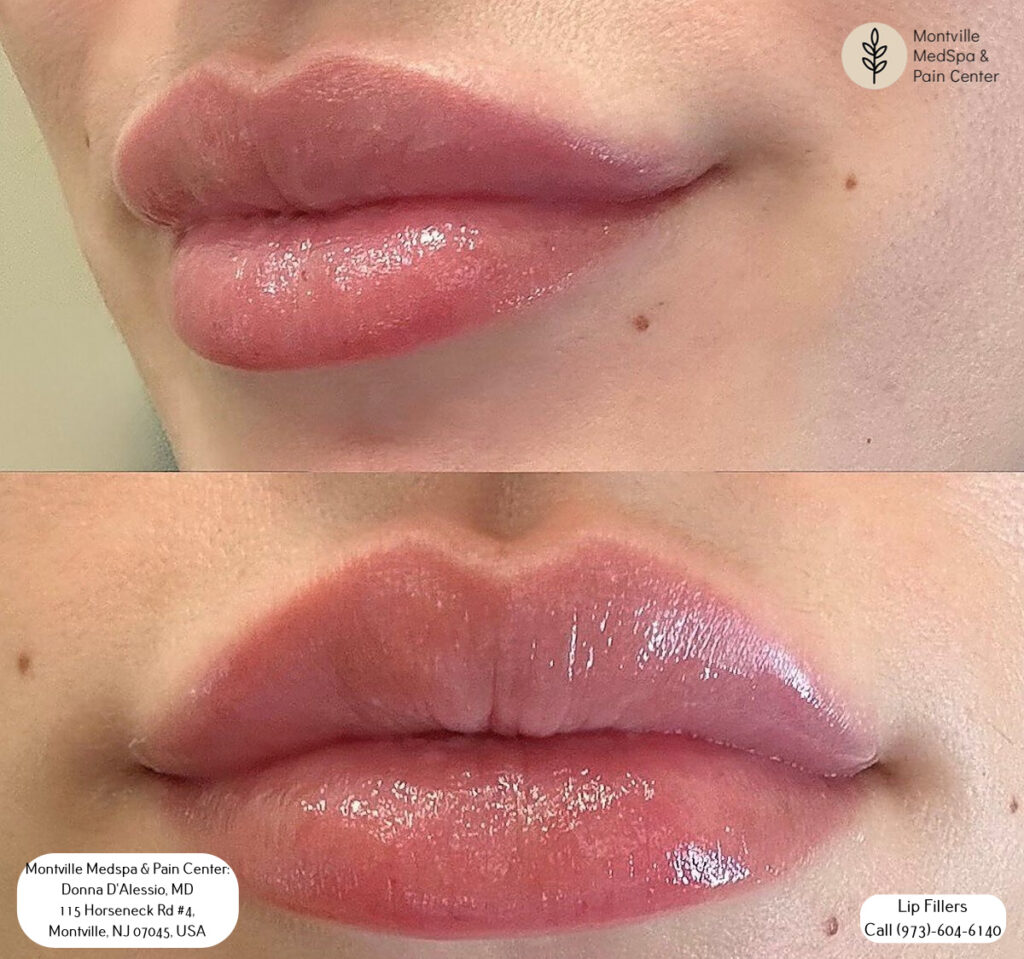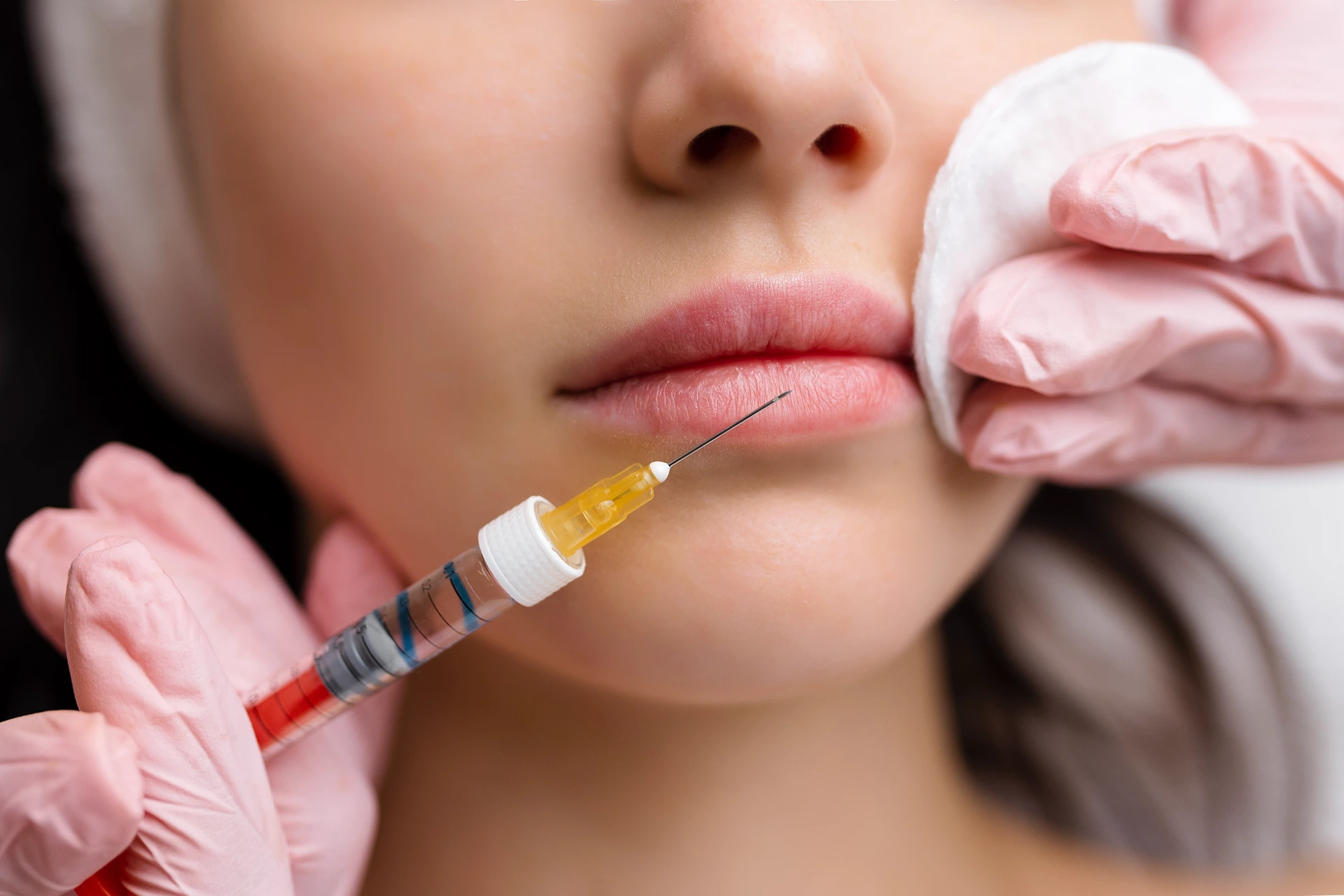Lip filler can be amazing when done right – but everyone’s ideal is different. If your results miss the mark, lip filler dissolution can give you a fresh start.
Lip filler injections can be an amazing aesthetic treatment for adding volume and definition to the lips when done properly by qualified practitioners.
However, as the treatment has grown in popularity, there has been a concerning rise in poor results from inexperienced injectors. Overfilled “duck lips”, lip filler migration, and lumpy, uneven results have become all too common due to poor injection techniques.
The truth is, dermal filler injections require extensive knowledge of facial anatomy and proper injection technique from a qualified provider who understands the nuances of different types of fillers.
When injected incorrectly or with the wrong type of filler product, complications like migration, lumpiness, and even tissue necrosis can occur.
Fortunately, for hyaluronic acid filler based products, there is an enzyme called hyaluronidase that can safely dissolve and reverse unsatisfactory results.
How Long Does It Take for Lip Filler to Dissolve?

While hyaluronic acid fillers like Juvederm and Restylane will eventually metabolize and dissolve on their own over 6-12 months, the process can be accelerated if you choose to have them professionally dissolved.
When hyaluronidase enzyme is injected, it starts breaking down the dermal filler almost immediately. However, it can still take up to 2 weeks for the full effects as the filler gradually softens and liquefies. Multiple rounds of enzyme injections may be required for severe cases or extensive lip filler migration.
Is Dissolving Lip Filler Worth It?
For many clients, dissolving lip filler treatment is absolutely worth it if they are unsatisfied with the results for any reason – whether due to overfilling, unevenness, migration issues, or simply a change of heart.
It’s also recommended to dissolve filler prior to certain medical procedures on the face, or if complications like vascular occlusion or an allergic reaction occur, even if the results were initially acceptable.
While some unevenness can be temporary as filler settles, dissolving may be the best choice if issues persist beyond 4 weeks or you simply don’t like the look.
Risks and Potential Complications
While very rare, there are some potential risks and complications to be aware of when dissolving dermal lip filler:
- Increased wrinkling or skin laxity as volume is lost
- Temporary facial drooping or distortion
- Allergic reaction to the hyaluronidase enzyme
- Excessive breakdown of your own natural hyaluronic acid
In some cases, clients have reported their lips not fully returning to their pre-filler state, especially if the original injections caused scar tissue buildup over time.
Will My Lips Go Back to Normal?
For the majority of clients, lips will return to their natural, original size and shape once all the hyaluronic acid filler has been fully dissolved and metabolized by the body.
However, in some cases – especially if you’ve had multiple filler treatments over many years – the stretching of the lip tissues can potentially cause some loss of elasticity. This may result in the lips not fully returning to their pre-filler state and appearing somewhat wrinkled or deflated initially.
Why Do Lips Look Wrinkly After Dissolving?
It’s very common for lips to look wrinkly, shriveled or “deflated” immediately after dissolving lip filler. This is typically due to the sudden loss of volume as the filler is broken down.
The lips may have also stretched over time from being overfilled, and the skin may not immediately bounce back once that volume is removed. There can also be temporary breakdown of your own natural hyaluronic acid supplies.
Not to worry though – this is just a temporary phase. As the swelling subsides over 1-2 weeks, the lips should gradually return to their normal, smoothed-out appearance before filler. Being diligent with lip moisturizers can help during this period.
The key is being patient and allowing full time for the lips to recover their natural plumpness and shape once the filler effects are reversed. With an experienced practitioner, your lips can get a fresh start.
What Causes Lip Filler Fails?

There are a few key reasons behind poor lip filler results:
- Poor injection technique – Injecting too superficially, into the wrong plane, or failing to properly massage and distribute the product can cause migration, lumpiness, and unsightly contours beyond the vermillion border.
- Using the wrong filler product – Different HA fillers have varying viscosities designed for specific treatment areas. Using too firm of a filler in the lips increases risks.
- Inexperienced injectors – Lip anatomy is complex. Injectors lacking extensive training are more likely to inject into the wrong areas or miss the proper injection plane, leading to issues.
The Risks of Botched Lip Filler
Beyond an undesirable overfilled or distorted lip shape, the risks of poorly injected dermal lip filler include:
- Filler migration – When injected too superficially or massaged improperly, filler can spread beyond the lip borders creating lumps or a “filler mustache” – a major risk of filler migration.
- Tissue necrosis – In worst cases, filler injected into a blood vessel can cause tissue necrosis and permanent disfigurement.
- Emotional distress – Having your lips and face disfigured by botched treatment takes an obvious psychological toll on clients.
When to Dissolve Lip Filler
The good news is that if you’re unhappy with your lip filler treatment results for any reason, hyaluronic acid (HA) based fillers like Juvederm and Restylane can be safely dissolved using an enzyme called hyaluronidase.
Common scenarios where dissolving may be recommended:
- You’re unsatisfied with the results – Overfilled, distorted, or migrated filler can be reversed.
- You had an inexperienced injector – Obvious signs of poor injection techniques like lumps and bumps mean starting over is best.
- You had a bad reaction – Though very rare, dissolving is advised if you experienced an adverse reaction.
How Lip Filler Dissolving Works
The process for dissolving hyaluronic acid (HA) dermal fillers like Juvederm and Restylane is relatively straightforward:
Hyaluronidase is an enzyme that breaks down and metabolizes the HA gel filler. It is injected into the areas where filler was originally placed.
The enzyme starts dissolving the HA filler over the course of a few days. You may need multiple rounds of injections for severe cases or lip filler migration.
As the filler breaks down, you’ll experience swelling and potentially bruising for 1-2 weeks as it metabolizes and your lips deflate back to their original shape.
What to Expect During Dissolving
While getting lip filler dissolved is a relatively quick in-office treatment, the full process takes a few weeks:
- Immediately after treatment, expect swelling and potentially bruising as the enzyme gets to work dissolving the filler gel.
- Your lips may look very thin and “deflated” at first as the filler breaks down. This is normal and temporary.
- It can take 2-4 weeks for all swelling to fully subside and for your lips to regain their original shape and appearance before the lip filler procedure.
Be patient and avoid re-injecting any new filler until you’ve reached the full dissolved results, which can take a month or more.
Finding an Experienced Lip Filler Injector
Of course, the best way to avoid the need for lip filler dissolution is to get outstanding results from the start.
But that requires finding a qualified, experienced injector who prioritizes proper technique and patient safety over profits.
Do your research – Check credentials, before/after photo galleries, and reviews for any practitioners you’re considering. Avoid cheap “filler parties” or Groupon deals.
Look for established medical spas and clinics with experienced nurses or dermatologists who have extensive lip filler treatment training and proven results.
Proper Lip Filler Technique
What separates an experienced, qualified lip filler injector from a novice? Proper technique, including:
- Understanding complex lip anatomy and avoiding danger zones near arteries/nerves
- Using appropriate filler products and amounts to achieve your desired results
- Injecting at the proper depth/plane to prevent filler migration
- Properly massaging and distributing filler after injection
An injector’s depth of knowledge and experience is critical for beautiful, natural-looking lip augmentation.
Lip Filler Aftercare Tips

Even with an experienced provider, there are steps clients need to take to ensure proper healing and prevent complications after cosmetic procedures like dermal lip filler:
- Avoid alcohol, exercise, and excessive activity for 24-48 hours after injection
- Don’t massage or put excessive pressure on the treated area
- Watch for any signs of unevenness, filler migration, or lumps as the filler settles
- Be your own advocate – don’t be afraid to voice concerns or get a second opinion
Conclusion
If you’re unhappy with your lip filler procedure for any reason, know that it can be dissolved and reversed by an experienced injector using hyaluronidase enzymes. But the best approach is to thoroughly vet any potential practitioner, look for extensive expertise, and never cut corners when it comes to work on your skin and face.
Your lips and appearance are too important to risk getting botched. Do your research, ask questions, and don’t be afraid to be your own advocate throughout the process. With the right practitioner, dermal lip filler can be an amazing treatment – but it’s a medical cosmetic procedure, not a beauty shortcut.










